The past two months have seen an avalanche of sexual misconduct allegations against powerful men. Although print and online publications have broken most of the major stories, television remains the US’s most common source for news. Whose misdeeds are getting the most attention on TV, and what can this tell us?
To get a sense, BuzzFeed News analyzed data from closed-caption transcripts from CNN, MSNBC, and Fox News in the months since the New York Times published its investigation into Harvey Weinstein. Specifically, we compiled a list of more than 60 high-profile men accused of sexual misconduct, and then counted the number of times the channels mentioned their full (first and last) names.
Here’s what we found:
• Relatively few of the accused men have received prominent, sustained coverage on cable news.
• Politicians and TV anchors have received the most attention.
• Fox News covered the initial Harvey Weinstein revelations longer than CNN or MSNBC did, and has mentioned Roy Moore less.
• According to their Google searches, Americans seem more interested in Matt Lauer than in any politician.
Keep in mind: Since news shows are often transcribed in real time, closed captions do have occasional misspellings and other errors. But, as you’ll see, they’re still able to reveal clear patterns. We’ve included a full methodology at the bottom of this post. We’ve also published all the code and data supporting this analysis.
Post-Weinstein, politicians and TV anchors have received the most attention
Figures who are influential in their industry but less well known to the public have received relatively little attention on cable news. Of the more than 60 names we searched for, many appear not to have been mentioned at all on the three networks we examined.
With the exception of Harvey Weinstein, the people mentioned most are either politicians or television journalists. This isn’t terribly surprising given the focus on cable news toward political coverage. Roy Moore is, by far, the accused person most mentioned on cable news, likely due to the high stakes attached to his upcoming election.
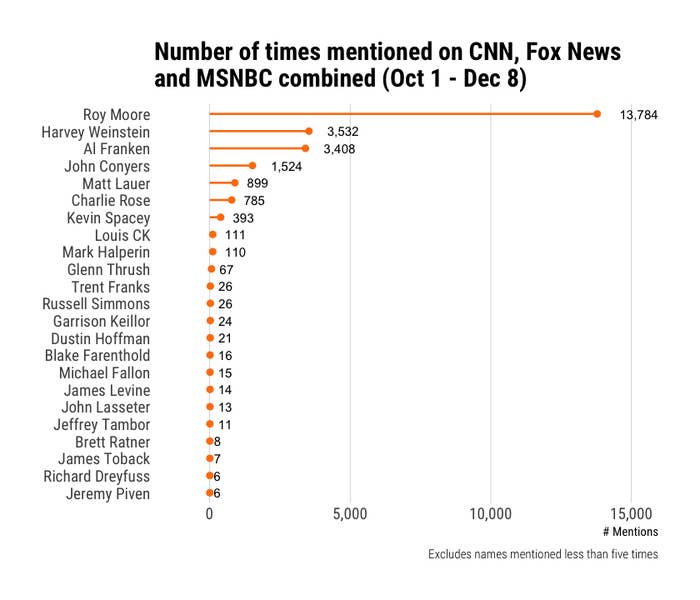
And here we can see the amount of coverage day by day:
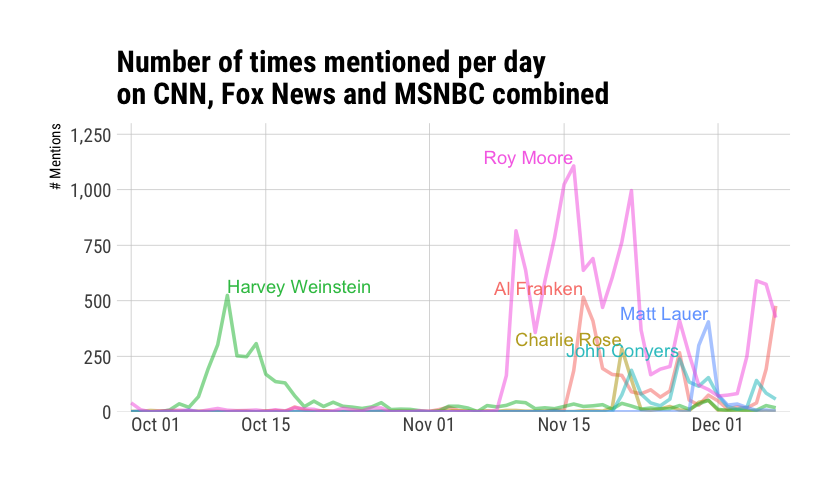
Weinstein has been mentioned almost every day
Even as attention has shifted toward politicians and television anchors, Weinstein continues to receive attention, as you can see in this chart:
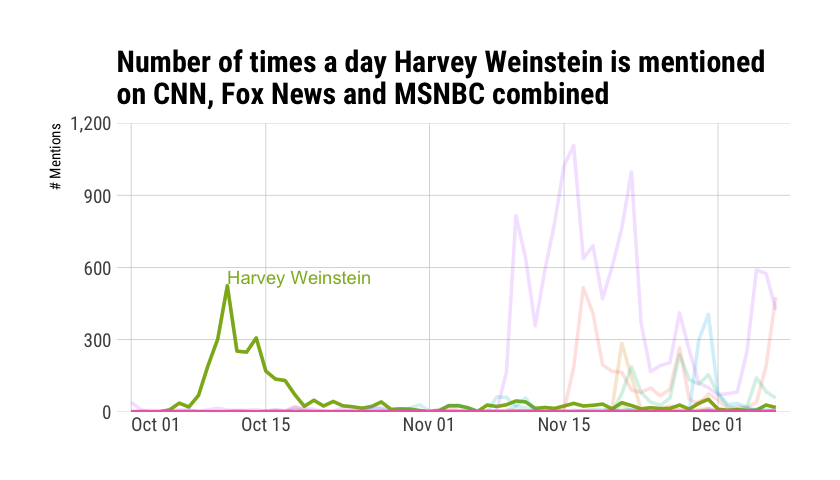
Attention to Weinstein peaked on Oct. 11 and then tapered off over the next week. But, largely because Weinstein has become a common reference point for each new scandal, cable news anchors and pundits keep saying his name.
In fact, since Oct. 5, Weinstein has been mentioned virtually every day on the three networks we examined. There are just two exceptions: Nov. 1 and Nov. 6. These two days came after the intense coverage of Weinstein had wound down, but before additional revelations about figures in entertainment and politics.
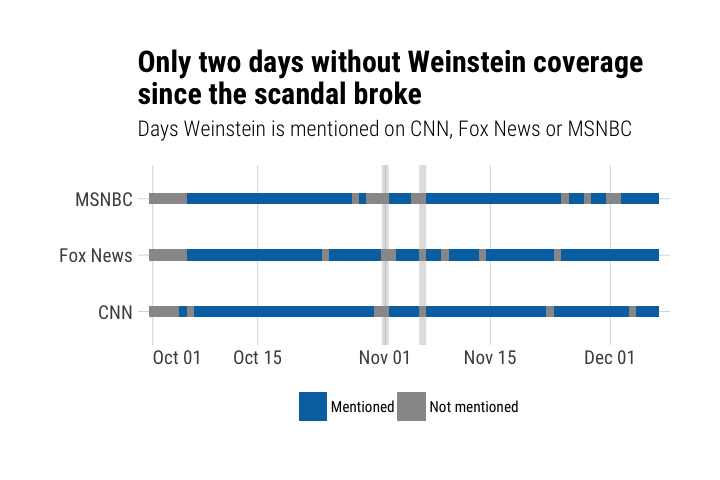
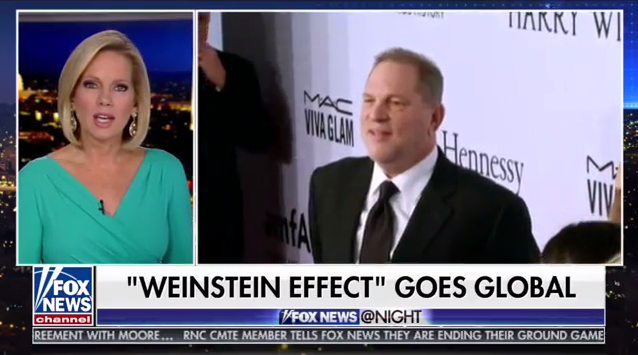
Differences in coverage by network
While the three networks mentioned Weinstein at roughly equal rates in the days immediately following the Times’ investigation, Fox News sustained that pace several days longer than either CNN or MSNBC:
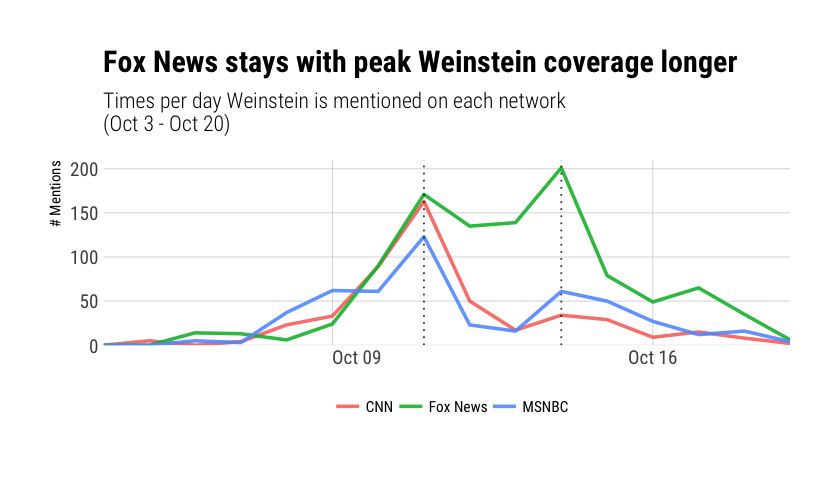
One possible reason: Weinstein’s role as a prominent fundraiser for Hillary Clinton and other Democrats. Some of the disparity in coverage of Weinstein comes from reports making this connection.
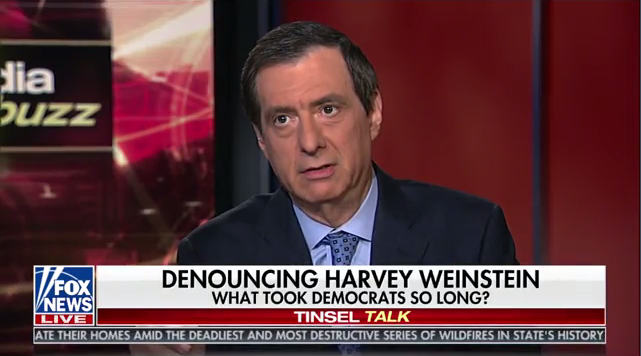
At the other end of the political spectrum, we see the opposite. Fox News has consistently mentioned Roy Moore less often than either MSNBC or CNN have:

That trend is especially clear when you look at the total number of mentions during that time period:
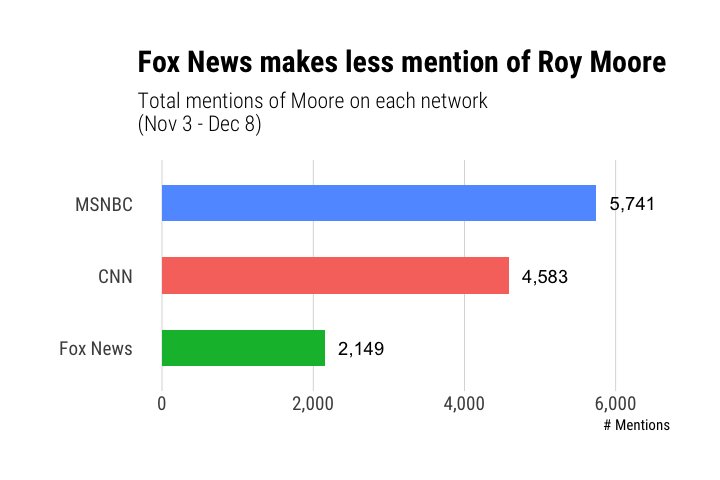
The data above counts the raw number of times that the networks mentioned Roy Moore. But if you look at the number of hours each day that Moore is mentioned at least once, you see less of a difference:
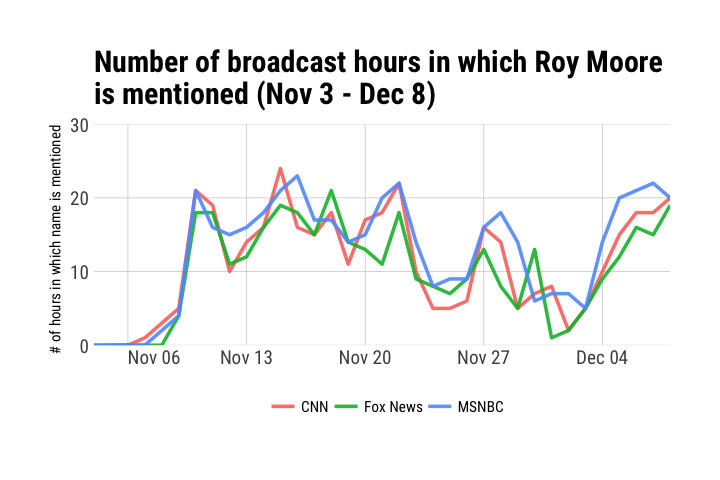
There are only 24 hours in a day, so there’s a natural limit to how high these counts can go. During peak coverage, Moore was being mentioned almost all day, on each network.
But it seems that, especially during peak coverage, MSNBC and CNN were talking about Moore more intensely than Fox News was. (It’s also possible that Fox News spoke just as much about Moore while mentioning his full name less often.)
On the other hand, the three networks have diverged little — at least until very recently — in their attention to Al Franken and John Conyers, the two most prominent Democrats to face allegations. In the chart below, you can see roughly similar numbers of daily mentions on all three networks until Dec. 8, the day after Franken’s resignation announcement, when MSNBC appears to have given him a good deal more coverage:
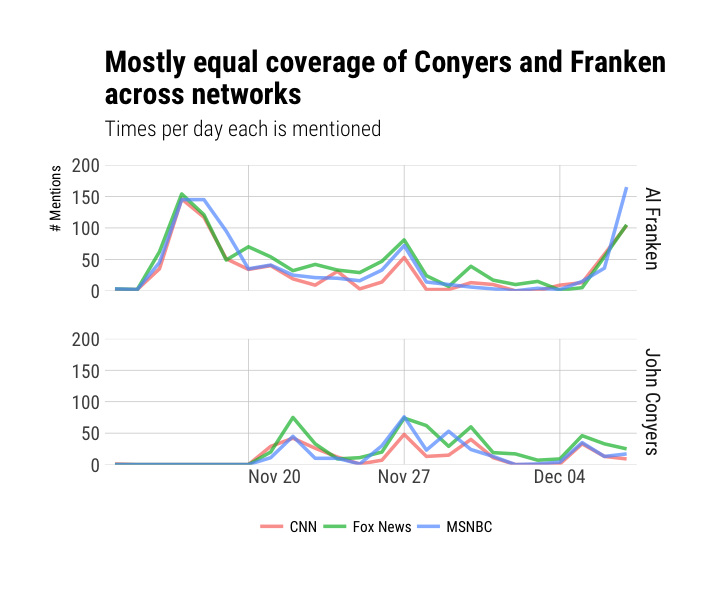
Google searches tell a different story
Cable news coverage may not reflect Americans’ interest in each case of alleged sexual misconduct. To get another perspective, we fetched data from Google Trends on the relative number of searches for each name. We found some major differences.
For instance, while Matt Lauer was just the fifth most-mentioned of the names on cable news, Google searches for his name reached a higher intensity than for any other figure. Other television and movie personalities, such as Kevin Spacey, Charlie Rose, and Louis C.K., also received more Google-search attention than many of those who received high coverage on cable news:
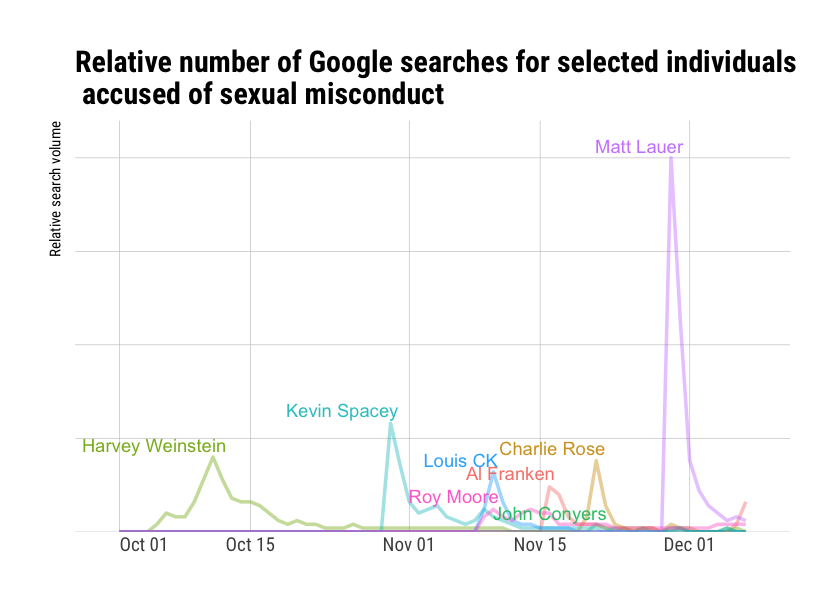

Methodology
For this analysis, we compiled a list of prominent men accused of sexual misconduct. No list can be comprehensive, but we drew on several sources, including lists from the Atlanta Journal-Constitution and the New York Times. To obtain cable news coverage data, we used TV Explorer, a tool from the Television News Archive and the GDELT Project that uses broadcast transcripts to count the number of sentences that mention a given phrase. In this case, the input phrases were each person’s name. To ensure that we were counting only mentions of the person of interest, we searched only for counts of that person’s full name (that is, “Roy Moore,” not “Moore” or “Roy”).
Since closed captions may have occasional errors — misspelled words or words left out — these counts may be slightly off. We dropped from our analysis names that had only a few mentions, as comparisons between these small numbers were unlikely to be accurate.
For data on internet searches, we used Google Trends, a service that provides a measure of the relative amount of Google searches that have been made in a given time and place for a specific word or phrase. As with the TV data, we searched for the full names of individuals on our list. Google does not report the total number of searches, but does report a score that indicates the relative amount of searches when comparing more than one search term. This means that we cannot say how many times Americans searched for “Matt Lauer,” but we can say, for example, that on the day that “Matt Lauer” received the highest number of searches during the time period we analyzed, that number was a little over three times the maximum number of searches for “Kevin Spacey,” about a month earlier.
